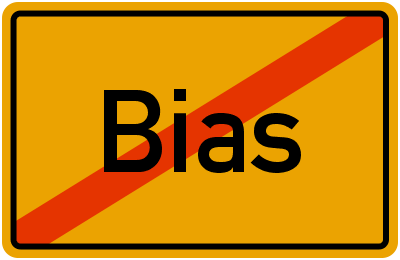Tailoring an Argument to an Audience
There is a common misconception about writing that it is a solitary exercise. As such, each time you get stuck on a word or sentence, it may be up to you alone to move past that writer’s block. However, that’s simply not true. Beyond the support of your instructor, peers, or tutors, you have an audience that you’re writing to that can help you generate ideas and stay focused. The more we imagine our audience’s likely reactions as part of the writing process, the more likely we are to generate ideas, reach them, and convince them or affect their thinking. Why? Because an argument implies a relationship. So, read on to find out more about how you can work together with your audience to develop your paper.

“Audience listens at Startup School” by Robert Scoble is licensed under CC BY 2.0
Audience Awareness in the Writing Process
Analyzing your audience affects nearly every stage of your writing, from early drafting to how you revise and get to the final draft. Beyond writing to answer a prompt, at a really basic level, you’re writing to be read, by your peers, your professor, or by any audience designated in your prompt. To do this effectively, consider the following questions. Many of these considerations already happen intuitively when we talk with other people. When we’re writing we need to be a bit more conscious about imagining the audience.
-
What does your audience probably already know about your topic? Depending on how much your audience knows, there may be background information you should include or leave out. For example, if we are writing on global warming in an English Composition class for an audience of an English professor and assorted students, we might need to use more detailed explanations for scientific concepts. However, if we are writing on global warming in an upper-level environmental science class, we can assume that our audience is more well-versed in the basics of climate science. We wouldn’t need to explain the details of the greenhouse effect works and could probably use more jargon from the discipline without defining every term.
-
How is your audience likely to feel about your topic? A skeptical audience needs more evidence than an open-minded one. Is the audience likely to have a prejudice or misconception that needs to be addressed? Assessing how your audience feels may also be the key to finding common ground. Refer to 9.8: Reaching a Hostile Audience for more information.
-
What new information can you provide? New information about a topic or its purpose can keep the audience engaged in a way rehashing old information cannot.
-
What is your relationship to the audience? This can affect your tone and how much of yourself you insert into the paper. For example, addressing an authority figure would require a different approach than addressing a relative peer or a complete stranger.
The Effect of Audience on Style
Like a conversation, in addition to your audience affecting what you say, your audience can sometimes affect how you say that content as well. The following items are some things to consider:
-
Purpose: What does your audience care about or believe in? What will move your audience to act? It will help your paper if you can align its purpose with something the audience cares about. See 9.6: Moral Character for more information on this.
-
Backing: What kind of evidence will convince your audience? Remember what looks like strong evidence to you may appear flimsy to your audience.
-
Sentence Type and Length: Should you use long and complex sentences? Or short ones? The reading level of your paper should match the reading level of your audience.
-
Level of Formality: Should you use technical jargon? Or slang? Avoid the temptation to ‘sound academic’ with technical words and phrases unless the situation calls for it.
-
Tone: Formal or informal? Serious or humorous? Distanced or personal? Hitting the right tone will help your audience take you more seriously. Consider checking out 8.4: Tone or 9.3: Distance and Intimacy for more resources related to this.
Reaching Out to the Audience
Many audiences form an opinion about what they read by the end of the introduction. Take advantage of this information to make sure you make a positive first impression. Try to pick a title that your audience may recognize or resonate with. Work on a hook that is geared towards your audience (as opposed to something that is purely provocative or attention-grabbing). Consider making a direct appeal to your audience in the introduction, and end your introduction with a thesis statement modeled after the values you know your reader will identify with. Check out 7.1: Introductions for more information about this.
Addressing a Diverse Audience

Image by OnlineStreet, licensed CC BY 4.0.
While the previous points have been geared towards writing to a specific audience, the following items are some good practices to observe for any audience you may encounter.
-
Recognize your cultural filter: Cultures are formed from a variety of factors like class, gender, generation, religion, and education. Your culture shapes how you view the world and can at times prevent you from understanding different backgrounds. Do your best to understand how your cultural values may be affecting your argument and how they may differ from your audience’s.
-
Avoid ethnocentrism: Assuming that your culture’s values, customs, or beliefs are superior to another’s is ethnocentrism. It’s an attitude that can alienate your audience. Be careful not to assume that all cultural practices are shared. Suspend any judgments or cultural stereotypes.
-
Adopt bias-free language: Biased language is tricky and has a way of sneaking into writing when you least expect it. While you may think writing “the male lawyer” provides important detail, including the lawyer’s gender suggests the law is an inherently male or masculine profession. So, be mindful of any biased, sexist, or stereotypical language that may come from unconscious biases as you’re writing and edit accordingly.
-
Acknowledge issues of oppression. Similar to ethnocentrism, the language we write or speak might convey a negative bias towards individuals or groups. If your message stereotypes a group, even unconsciously, you risk offending your audience. Examples of discriminating language to avoid include:
-
Racism – Your audience will be diverse. By recognizing that there are many cultural frames of reference, you’ll reach each reader or listener effectively. Unless it is necessary, avoid references to ethnicity.
-
Heterosexism – If your essay or speech depicts a relationship, don’t assume that each member of your audience is heterosexual.
-
Ageism – Many pervasive stereotypes exist with regard to the age of individuals. If you write or speak about an elderly person, challenge discriminating ideas such as “old people are feeble” or “teenagers lack wisdom.”
-
Sexism – While sexist language assumes one term for both genders, sexism suggests one sex or gender is inferior to the other. To suggest that females are emotional and men are logical privileges one sex over the other, while stereotyping that all of one sex have the same traits or characteristics.
-
Attribution
- Most of the above was adapted by Ryan Hitch from Composing Ourselves and Our World by Elizabeth Burrows, Angela Fowler, Heath Fowler, and Amy Locklear, Auburn University at Montgomery, licensed CC BY 4.0.
- Portions of the above were written by Dylan Altman, licensed CC BY 4.0.
Chapter Attribution
This chapter is from “Forming a Research-Based Argument” in in How Arguments Work: A Guide to Writing and Analyzing Texts in College by Anna Mills under a CC BY-NC 4.0 license.

